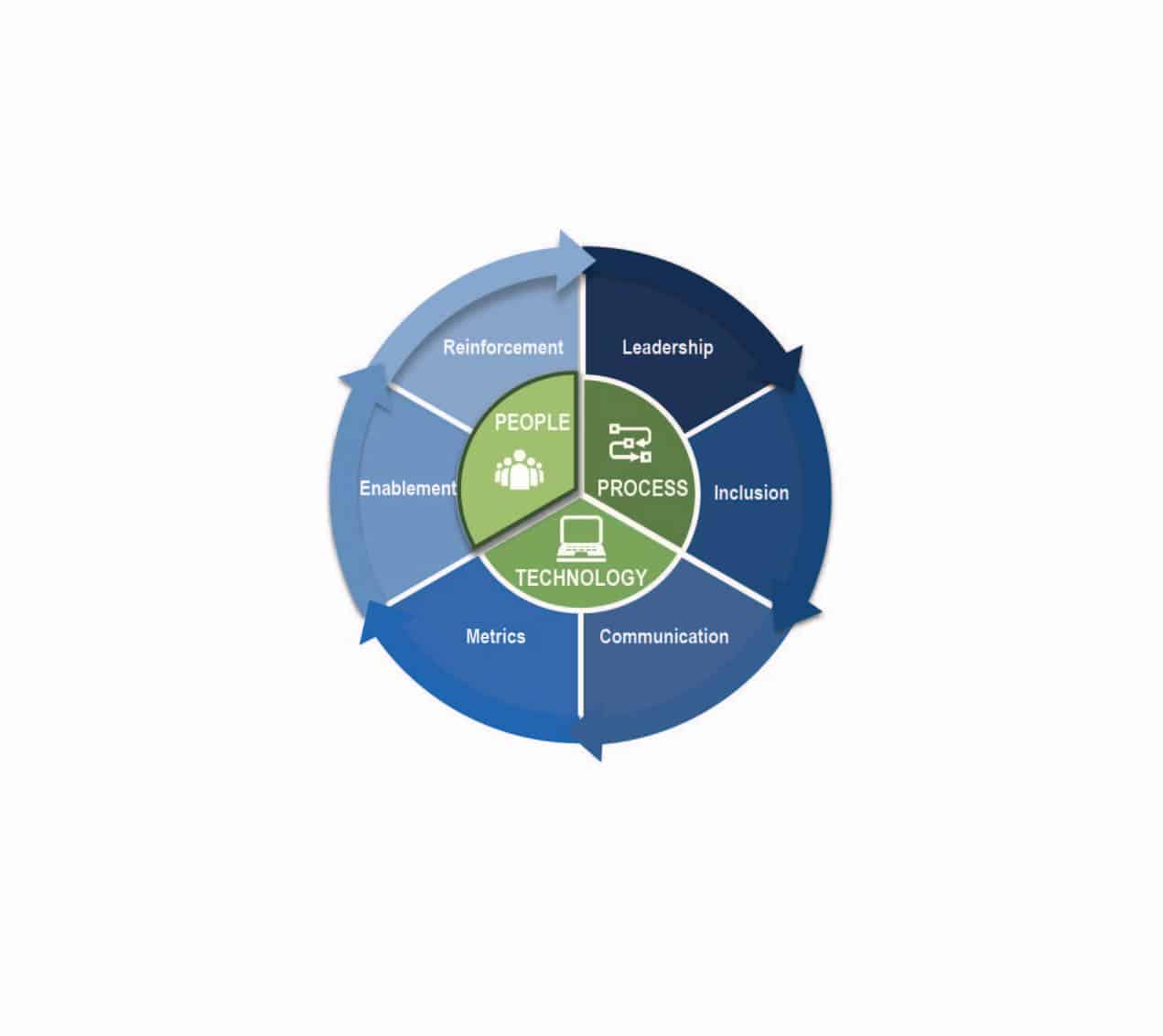Nothing brings a project to its knees faster than poor communication.
Poor communication is a primary contributor to project failure. Imagine you opened a new business but did not communicate this event to anyone. Potential employees would be unaware you were hiring, and customers would not know the business existed. Without employees or customers, your business would be short-lived. The same is true for promoting a new system. Those impacted should be made aware well in advance of the actual implementation – the what, when, why, and how.
In a previous article, Six Key Principles of Successful Change Management, we introduced the principle of Communication and its critical role in a successful software implementation project. In this article, we dive a little deeper into the advantages of good communication, how to create a solid communication strategy and plan, and a few tips for implementation.
Six Key Principles of Change Management
Impact Advisors’ six key principles of change management illustrate how progressing through the stages of change and preparing for the future state requires a coordinated effort including sponsorship, stakeholder analysis, impact assessment, communications, training, and an effective adoption plan.

Communication enables successful change
There are compelling advantages for creating and managing an effective communication plan.
Builds Awareness and Excitement
Informing your audience can shift feelings of anxiety or trepidation to feelings of excitement and anticipation for an upcoming change. People want to know how change will impact the organization and how it will affect them. Having this knowledge will improve system adoption and effective usage.
Clarifies Expectations
Individuals want to know what the new software will offer, how their jobs will change, the schedule for the change, when and how they will be trained and supported, and what is expected of them. Effective communication helps people better understand their roles in the future state.
Creates Inclusion
Mapping out a detailed communication plan creates transparency and promotes stakeholder buy-in and engagement. A sense of involvement is created through communication, which increases the likelihood of commitment to and ownership of the new initiatives.
Enables Feedback
Communication is a two-way street. In addition to sharing information about the project, expectations and roles, users must be able to provide feedback, ask questions and share concerns. The Communication Team or members of the Change Management Team can provide responses and instill trust, which increases the likelihood of sustainability and long-term success.
Reduces Resistance
Understanding the upcoming change and the reasons behind it, the benefits of the new initiative, and how their jobs will be are affected, individuals are more likely to support the change. Timely information provides individuals the ability to consume and process information at their own pace, which reduces resistance and anxiety to the change, which in turn, helps the success of the change management strategy.
Creating a communication strategy and plan
There are several components to an effective communication plan. To help you think through each one, ask yourself the following questions:

Approach: WHY am I communicating?
Document the purpose and approach and how it relates to the overall project. Determine the goals and objectives. What do you want to accomplish?
Audience: WHO will receive the communication?
Identify the project’s key stakeholders and their preferred methods of communication. Map your content (defined above) to your stakeholder and user groups. Take note of contact information, preferences and expectations for key stakeholders. Include these details in your plan for easy reference.
Channels: HOW am I going to communicate?
There are a variety of channels including events, meetings, reports, emails, blogs and vlogs, phone calls, and internal social media platforms you can use to build your community. Select the appropriate method of communicating by audience and add each type of communication to your plan. If you have a team, collaborate and decide who is responsible for each communication.
Distribution: WHEN will I communicate?
Create a communication schedule. The schedule can be in a calendar-style format, worksheet grid, or scheduling software. Document each communication planned and the timing and frequency of the messages.
Repository: WHERE can I store communications for easy access?
Develop a central content repository in which to store communications so they can be easily accessed by the communication team and by the recipients. No one wants to hunt for messages housed in disparate locations and navigate cumbersome processes to access information.
Measurement: IS the plan working?
Following each communication, ask for feedback and solicit questions from your audiences through direct emails and surveys. The responses you receive enable you to measure your reach and effectiveness, and will guide you to make necessary adjustments to your plan.
Pro Tips
Now that you have crafted your communication plan, here are some tips to make your communication plan easier to manage:
-
Standardize your communications with templates, agendas and schedules. Reuse templates to support continuity and branding.
-
Ensure your communication team knows their assignments and responsibilities. Each role on the team should be clear.
-
Remember your communication plan is a living document. Review your plan regularly to ensure that it is working, and consider changes based on feedback received.
With the building blocks in place for an effective communication plan, you should incorporate the other change management principles to support Communication, including Enablement, Leadership, Inclusion, Metrics and Reinforcement. Actively addressing all six principles will ensure your organization has a well-developed Change Management Plan.
If your organization needs help implementing change management, Impact Advisors offers expert consulting with extensive experience.


